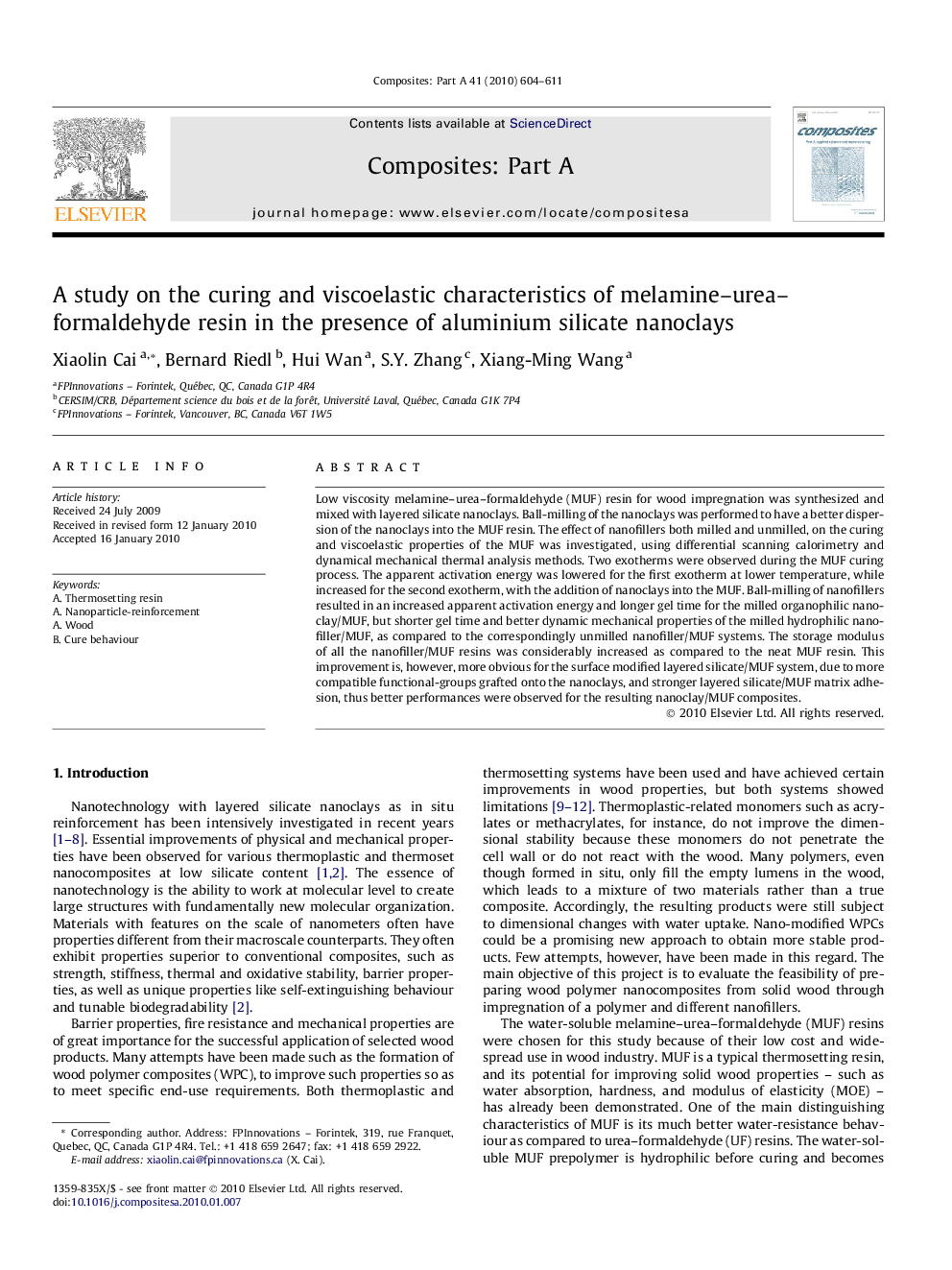| Article ID | Journal | Published Year | Pages | File Type |
|---|---|---|---|---|
| 1467013 | Composites Part A: Applied Science and Manufacturing | 2010 | 8 Pages |
Low viscosity melamine–urea–formaldehyde (MUF) resin for wood impregnation was synthesized and mixed with layered silicate nanoclays. Ball-milling of the nanoclays was performed to have a better dispersion of the nanoclays into the MUF resin. The effect of nanofillers both milled and unmilled, on the curing and viscoelastic properties of the MUF was investigated, using differential scanning calorimetry and dynamical mechanical thermal analysis methods. Two exotherms were observed during the MUF curing process. The apparent activation energy was lowered for the first exotherm at lower temperature, while increased for the second exotherm, with the addition of nanoclays into the MUF. Ball-milling of nanofillers resulted in an increased apparent activation energy and longer gel time for the milled organophilic nanoclay/MUF, but shorter gel time and better dynamic mechanical properties of the milled hydrophilic nanofiller/MUF, as compared to the correspondingly unmilled nanofiller/MUF systems. The storage modulus of all the nanofiller/MUF resins was considerably increased as compared to the neat MUF resin. This improvement is, however, more obvious for the surface modified layered silicate/MUF system, due to more compatible functional-groups grafted onto the nanoclays, and stronger layered silicate/MUF matrix adhesion, thus better performances were observed for the resulting nanoclay/MUF composites.
